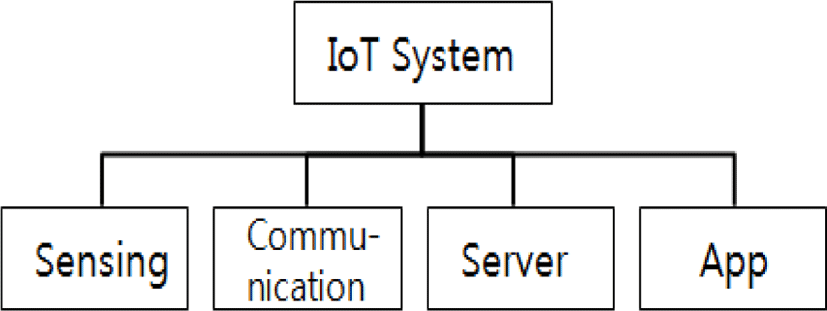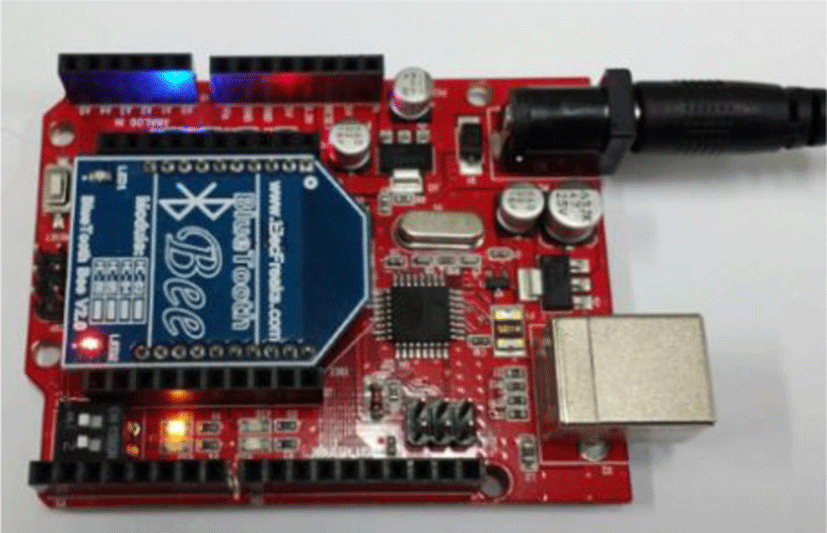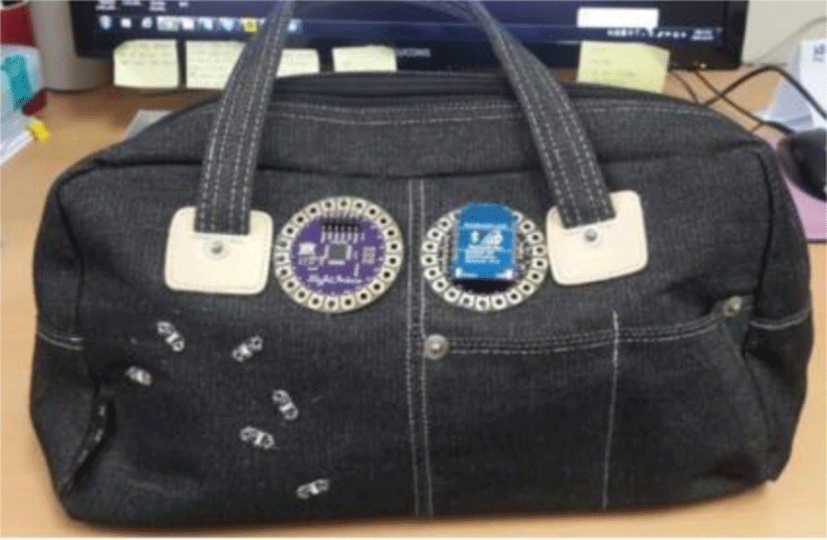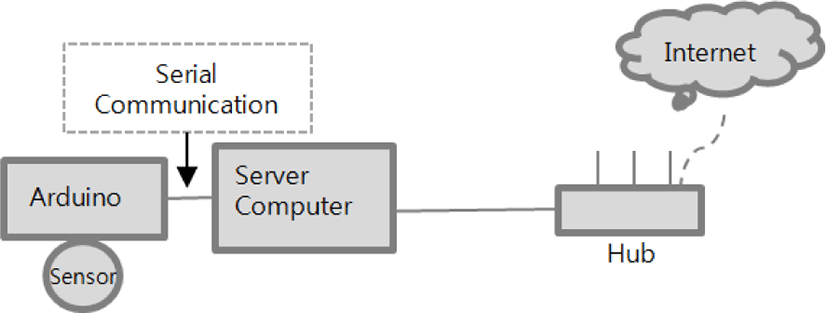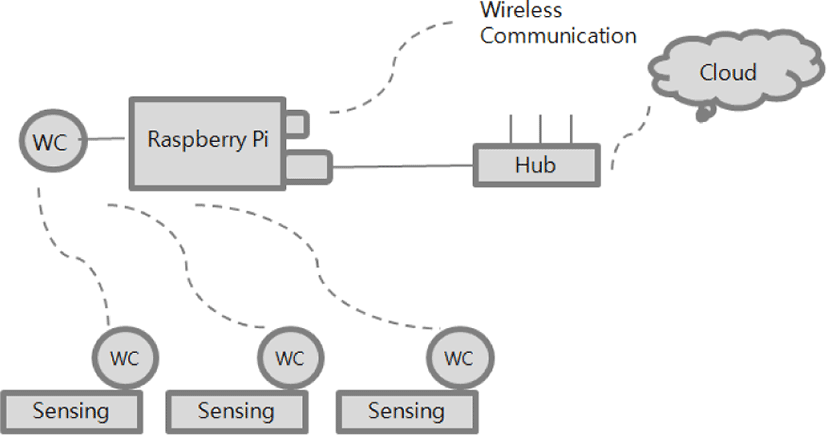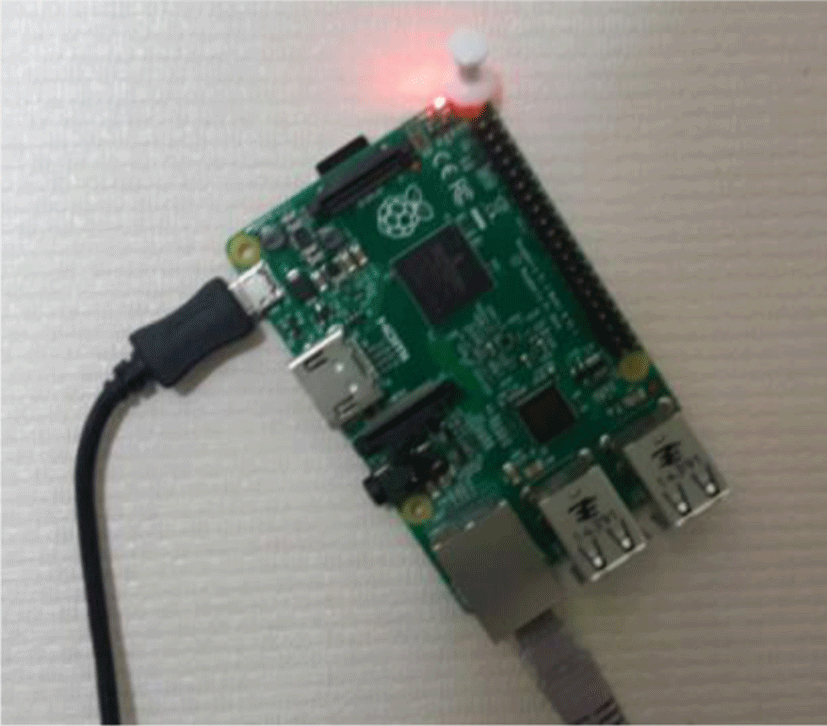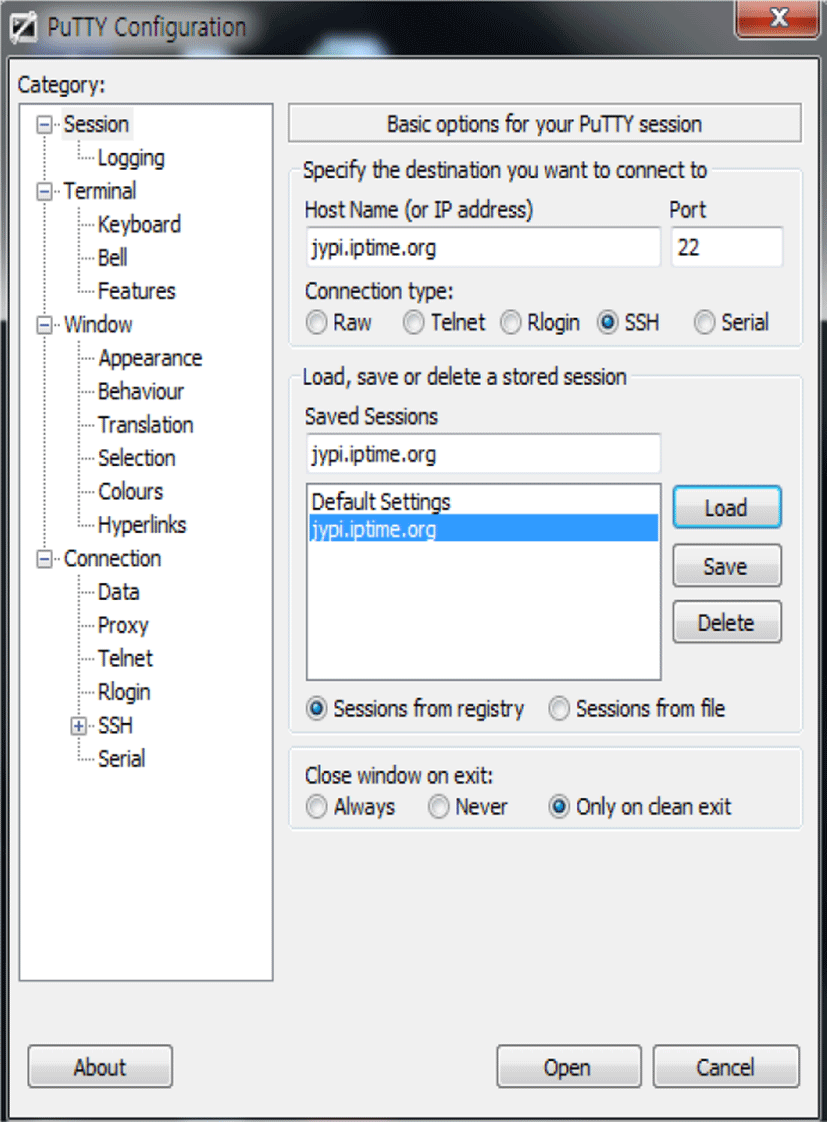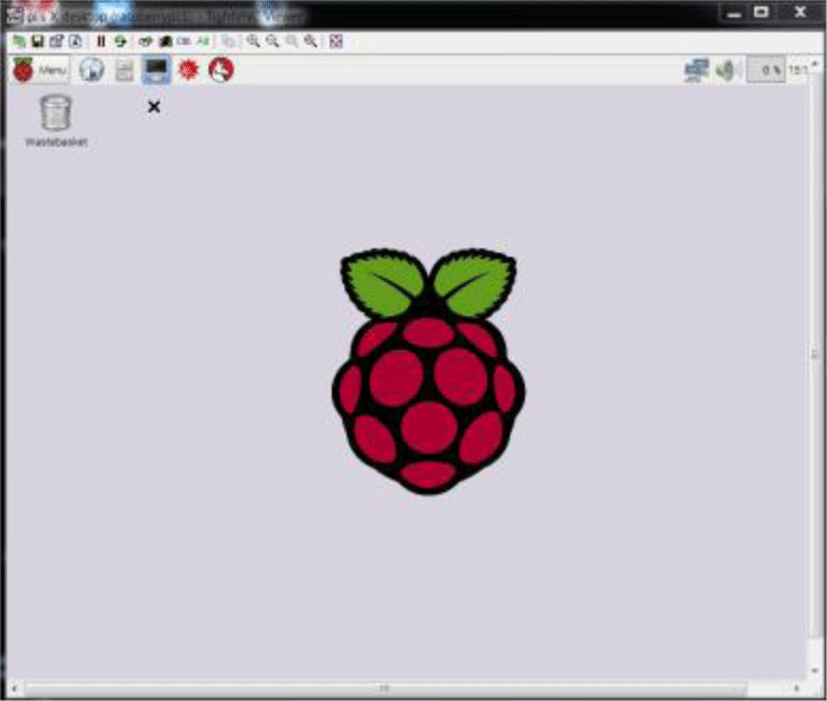I. INTRODUCTION
Computer application technology has become so advanced that we can create an environment which allows us to enjoy the internet service beyond any limitation of space and time, independent of what one does either moving or doing household work. Internet of Things (IoT) technologies indicates to connect data obtained from the various sensors to the Internet through connection medium and provide the services [1]. In recent years, a variety of the applications in goods or services using IoT were developed. These technologies were applied in various field like real-time monitoring of the patient's condition, providing the information about an amount of workout done (work rate) and on various personal health management issues.
In addition, in the fields of the industry, this technology is used for monitoring plant facilities or applying IoT in the distribution phase [1]. Therefore, IoT technology is not only applicable to a particular field but also in day to day life. A smart clothing may be quoted as one of the vast areas of the application of the IoT. Smart clothing is a technique to monitor the health status of the user, or provide the information of user's activity by attaching a sensor on the cloth or jewelry which a person wears. In order to implement the smart clothing, communication with the sensor is required along with a server which is capable of managing necessary information. In this study, it is aimed to configure the IoT system for the smart clothing and compare the characteristics with each system.
II. RELATED STUDY
Smart clothing is one of the most important devices which can be used in the implementation of Internet of Things (IoT). IoT is a system, through which the user can exchange information irrespective of time and place. Objects (Thing) of the IoT are involved in the automated production and delivery of information by using the sensor. Much information, circulated on the Internet that you use, is the data which was produced or collected by objects as well as people. Thus, IoT system has already arrived for practical use on different issues around us. Beyond the correlation between the individual and the Internet as well as the things (or objects) and the Internet, the various combination of the services became convenient to the user. In particular, it is applicable to a variety of sports and medical fields. In the field of sports, these products record and analyze the heartbeat rate, body temperature, exercise amount (work-rate), etc. to determine the user's health, [2].
In addition, a smartwatch which allows you to make phone calls and measure your personal activities by just wearing it on your wrist. In the field of medical research, the study for monitoring the condition of a patient is done by automatically measuring the body temperature, pulse rate, as well as the study for monitoring the elderly living alone or a person with disabilities have been actively conducted. [3].
According to Hong [4], the IoT-based wearable device belongs to these areas which have much requirement for measuring the activities of the user, and there has been much demand by the customers for its application to medical devices. In addition to this study, Jang [5] points out that popularization of smartphones and deterioration of price of various sensors, the Internet of Things technology has gained popularity. This emerges the demand that even a layman can afford to implement the IoT technology. Nowadays, the microcomputer has become smaller and enhanced its performance with lowering the cost, so we have the environment where anyone can implement the IoT systems. Hence, IoT systems should grow actively and must be implemented in an easy and manageable way. Recently, Arduino [6] board has become popular and been used a lot because of it’s cheap price, easy to handle as well as it is based on the open-source system. Also, Raspberry Pi [7], developed in the UK, is characterized by subminiature feature and also can be used as an independent computer. This study aims to configure IoT systems for smart clothing using the features of Arduino and Raspberry Pi and comparing them with each other.
III. COMPOSITION OF IoT SYSTEMS
The technology for implementing an IoT system for smart clothing is shown in Figure 1.
This study mainly compares the characteristics of the Arduino and Raspberry Pi as well as configures the IoT system using a microcomputer. Features of the Raspberry Pi and Arduino are shown in Table 1.
As shown in Table 1, Arduino and Raspberry Pi have similar size but different characteristics. Arduino runs in low-speed and does not have a built-in network. On the other hand, Raspberry Pie can be used as an independent computer, as its speed is high and supports the interfaces of the keyboard and display. A proper combination of these two boards can easily configure the IoT system.
First, using of Arduino includes total 14 pins of digital and analog input and output pins where various sensors can be attached to sensors such as a temperature sensor, illuminance sensor, ambient light sensor, heart rate sensor, and ultrasonic sensor. It can be an additional advantage of this system since various service sources are provided for the sensors. When you connect a temperature sensor then either the temperature sensor or a module, which measures the temperature and humidity at the same time, can be used. Through a simple circuit configuration, you can obtain the desired information and it can also communicate by connecting ZigBee, Bluetooth, Wi-Fi module to it (Arduino). Figure 2 shows an example of a Bluetooth module connected to FriBee[8]. FriBee is an Arduino-compatible board designed to be equipped with wireless communication modules.
Along with Arduino compatible boards, there is also a Lily Pad Arduino board which can be attached to the cloth. LilyPad board was developed to be attached to clothes, hat or shoes by using the electronic thread. Figure 3 shows an example of attaching the Arduino LilyPads in the bag. A board on the left in the figure is the LilyPad board, and the board on the right is a Bluetooth board. It is a bag which can communicate with the Bluetooth device.
A s we know, Raspberry Pi has the speed of 900MHz with 1GB memory and have 40- input and output pins which can support four USB ports and networks. This is the reason why Raspberry Pi can also be used as an independent, Linux-based computer as well as playing the role of sensing and it can also be used for building a server. Raspberry Pi supports HDMI ports, so it can be utilized as a monitor by connecting to a TV, and it supports VideoCore IV 3D graphics core which is convenient for multimedia production and its application. Raspberry Pi can be used to configure the server in the IoT system for its excellent features in contrast to its compact size.
To use the Raspberry Pi as a Linux-based computer, first you need to format the SD card and install Rasbian. Rasbian is a free operating system based on Debian optimized for the Raspberry Pi hardware and also a Linux-based OS [7] [9]. When you insert SD card, it is installed with Rasbian in Raspberry Pi and boot it, then the Raspberry Pi is ready to be used.
IV. THE MODEL OF THE PROPOSED SYSTEMS
Arduino can pass the sensed data to the computer through serial communication. Figure 4 shows the sensing model using serial communication. By using a digital/analog port on Arduino, it is feasible to measure the temperature and illumination. It can transfer data at regular intervals of time in a serial communication.
As we know that this model is built for using a PC as the server but can be directly used if a PC is installed as a server. This system transfers the sensed data to the serial communication. Therefore, the program is simple and there is less risk of data loss; but as it is always supported by the PC, there may be restrictions on movement and the actual implementation of IoT
Figure 5 is Model B utilizing a RaspberryPi as the server.
In Figure 5, WC refers to wireless communication. Wireless communication between the sensing module and the server can be implemented in three types such as ZigBee (ZigBee, IEEE 802.11)), WiFi (WiFi, IEEE802.15.4) and Bluetooth (Bluetooth, IEEE 802.15.1). ZigBee wireless communication is available within the range of about 100m ~ 1.6Km. However the distance becomes shorter when there is an obstacle. ZigBee communication does not support smartphones therefore a separate module is used with a smartphone. Wi-Fi can be supported within 50M of range. Korea is one of the most convenient place to use Wi-Fi as it is available in most of the places and it is also compatible with the smartphone.
The communication method, which is popularly used in the IoT system, is a Bluetooth communication method. Since Bluetooth enables direct communication between the smartphone and the sensor, so it can be utilized without intermediate servers. It can be used at a distance of less than 10M indoor, and it particularly requires pairing as it was designed for one-to-one communication. Table 2 is a comparison table of characteristics of each model.
Raspberry Pi itself can be used as a computer by connecting a monitor, keyboard and a LAN cable. However, it brings about inconvenient as you have to install, and connect a keyboard and monitor whenever needed for its use. Raspberry Pi is more convenient and handy to implement IoT system due to its compact size, and it can be installed and programmed by the user in any place whenever it is necessary. Figure 6 shows that the Raspberry Pi is installed and used independently.
.
Raspberry Pi can be programmed remotely by connecting directly to the network address because the network supports it. To connect the network of Raspberry Pi from your computer, you have to know the IP address of Raspberry Pi, for example, you can find the access number of Raspberry Pi from wireless router in your office or house. When you connect to an IP address, you are able to directly control the Raspberry Pi from your computer.When you want to connect from an external domain; you need to connect to Raspberry Pi with the ID, which is a unique identifier ID. For remote access, you need to download and install the Korean version of PuTTY [11] and after installing the remote access program, you have to give the Hostname orunique IP insettings screen and press the [Open] button. Figure 7 is of PuTTYsettings screen. Figure 8 is a screen connected to a Raspberry Pi.
V. CONCLUSION
This study has been focused on comparing the features and configuration of the IoT system applied for smart clothing. The IoT system is a system process of the data received by the sensor, and deliver the information through the wired or wireless communication channels. Smart clothing is an important area to implement the IoT because it is always close to the user. Recently, computers were miniaturized in size, and the performance was improved which leads to implement the IoT system at a relatively low cost. Arduino and Raspberry Pi are being widely used in a variety of areas since they have high usability due to a small size and excellent performance. Arduino is suitable for implementing the sensing system.
To run the IoT, a server needs to receive and process data, along with that RaspberryPi can be implemented an Independent ComputerRaspberry Pie utilizes not only the LAN service but also Wi-Fi, if Wi-Fi module is present on it and a user can also implement a program by connecting it with remote access. According to this study, we can say that, an IoT system with excellent performance and easy installation can be acquired by using Arduino board in sensing part and Raspberry Pi for server and multimedia part. For further research, we planned to study about application of data which is collected by smart clothing on Big Data.








